#Newtownforbes
Text
A Familiar Scenario
Formerly known as Lisbrack House, this building in Newtownforbes, County Longford became an episcopal palace when enlarged and occupied in the early 1870s by George Conroy, Roman Catholic Bishop of Ardagh and Clonmacnoise. It continued to serve this purpose until c.1920 when used as a novitiate for the nearby Convent of Mercy before in turn becoming a secondary school in 1951 and finally a…
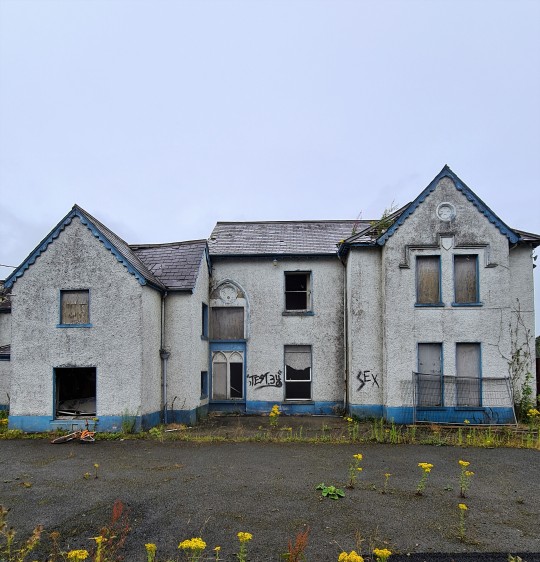
View On WordPress
1 note
·
View note
Text
Remembering our mother on the centenary of her birth

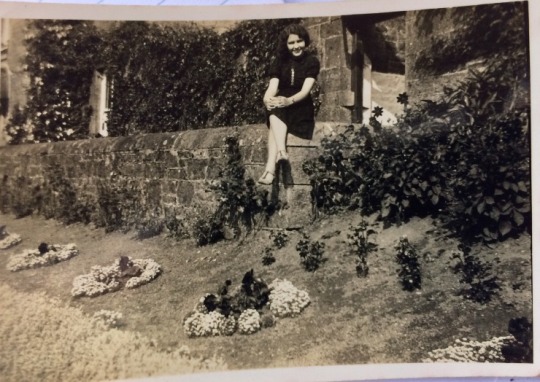
Maud Clinton on the wall at Newtownforbes Station c. late 1930s
100 years ago, on Saturday January 19th 1918, in Kishawanny, Co Kildare, our grandparents, Christopher Robert Clinton and Jane Williams welcomed their first child into the world. She was our mother and was christened Sibyl Maud at Holy Trinity Church in Derrinturn on January 27th with William Clery and Bridget Clery as godparents.
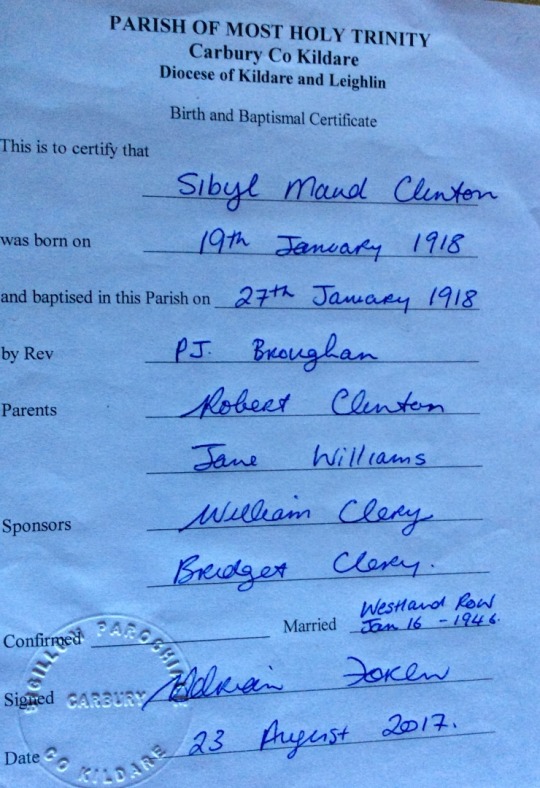
A…
View On WordPress
#Carbury Station#Derrinturn#Donegal home#Duchas Schools Collection#Gallagher Family History#Goresbridge#Kishavanna#Morse Code operator#Newtownforbes#Telegraphist
0 notes
Text
Bryonny Sainsbury Death – Obituary, Bryonny Sainsbury Has Died
Bryonny Sainsbury Death - Obituary, Funeral, Cause Of Death
So saddened today Bryonny Sainsbury Rest in Peace We will remember her always.
Thinking of Mum Alison Sainsbury, Dad Chris, brothers, Granma Jenny, Grandad Pete & extended family.
....click link to learn more
Bryonny Sainsbury Death – Obituary, Funeral, Cause Of Death
So saddened today Bryonny Sainsbury Rest in Peace We will remember her always.
Thinking of Mum Alison Sainsbury, Dad Chris, brothers, Granma Jenny, Grandad Pete & extended family.
Thinking of Bryonnys work colleagues & friends also at The Hair Bar, Newtownforbes, she will look after you all from above
Through a social media…

View On WordPress
0 notes
Photo

Welcome to AliceAnn Online. At our bridal store in Newtownforbes in Ireland, AliceAnn Bridal's Alison has been guiding gorgeous women toward bridal perfection for over 15 years. 👰💖 There's designer gowns for you to buy online, or you can make an appointment to come and try something on if you prefer. You can even take our online style test from wherever you are, to find out what will suit you. Want something unique? No problem - we design, create, and even carry out wedding dress alterations at AliceAnn Bridal too. 💃 If you're ready to look and feel amazing, the links to shop & book are in the bio 😊⚘
0 notes
Photo
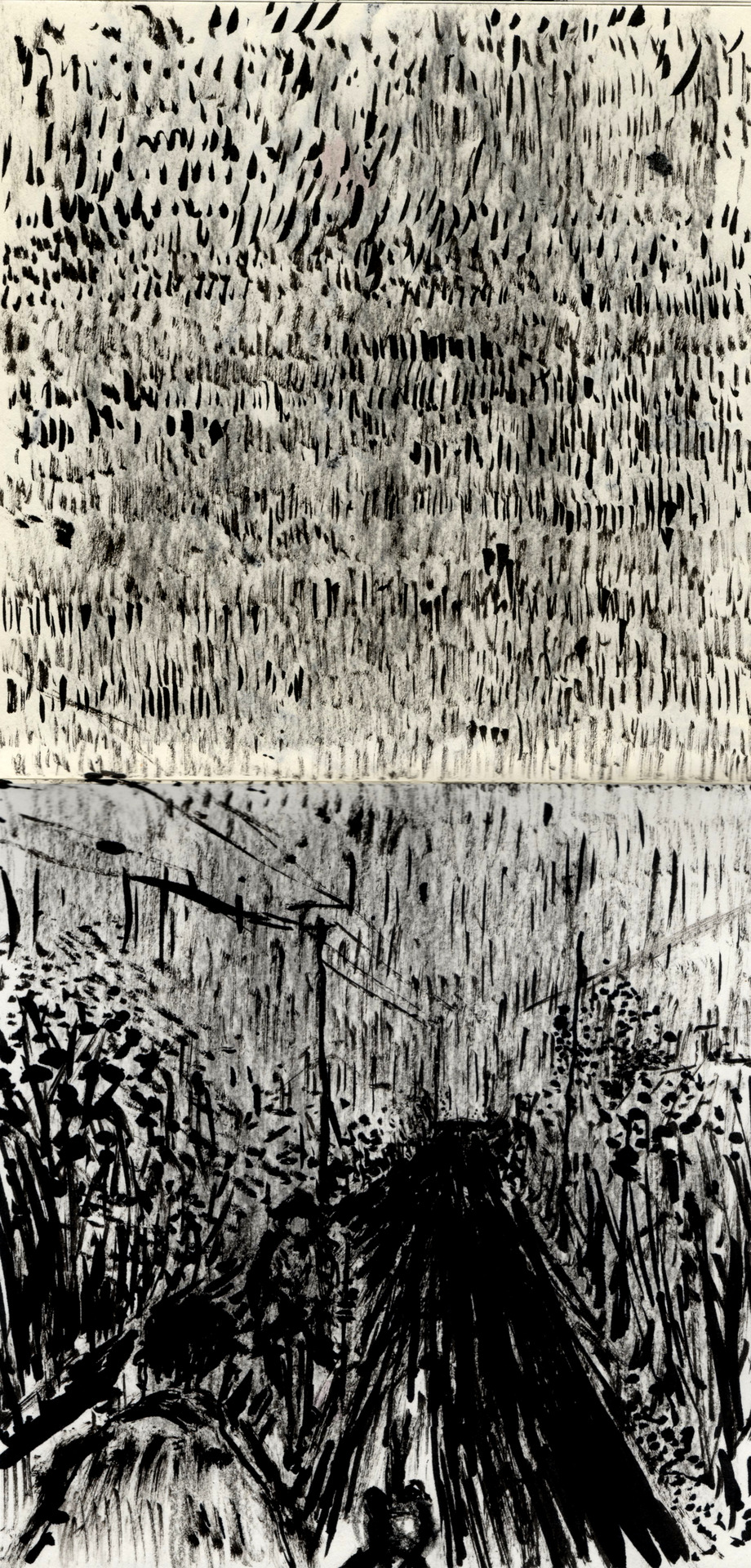
My Father meeting me on the Ballagh road
#ballagh#newtownforbes#scribure#drawing blog#illustration#ink#art#Ireland#Longford#Father#Black and White
53 notes
·
View notes
Text
Ill-Remembered
In the grounds of St Paul’s church, Newtownforbes, County Longford, this is believed to be the grave of Charlotte Brooke, a woman today too-little remembered or celebrated. Born around 1740, she was one of 22 children (only two of whom survived to adulthood) of Irish novelist and dramatist Henry Brooke whose Gustavus Vasa was famously the first play banned under the 1737 Licensing Act: it appears…
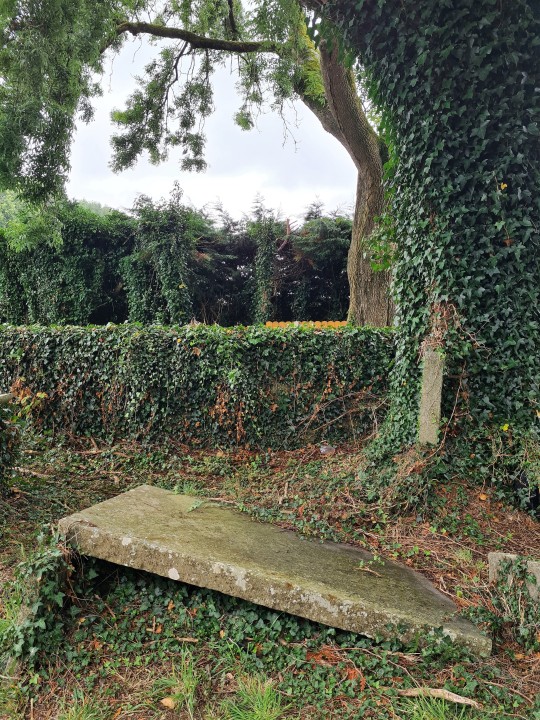
View On WordPress
1 note
·
View note
Text
Newtonwforbes in County Longford is a small village located just a few miles outside Longford town, on the busy N4 Dublin to Sligo road. Originally known as Lisbrack (Lios Breac in Irish), the name was changed to Newtownforbes in the middle of the 18th Century by the Forbes family, who were granted the lands here in the early 1600s. The Forbes family, with the title Earls of Granard, have lived in the village for over 300 years.
The gates to Castle Forbes are in the middle of the village.
Castle Forbes, the seat of the Earls of Granard (Image accessed on Flickr)
The present Castle was constructed in the 19th Century – the original built c.1624 was destroyed by fire. As this is a family home, the entire demesne is private and not open to the public.
Introduced Grey Squirrel (Image Wikipedia)
In 1911, the grey squirrel was introduced here. An indigenous species of North America, several pairs were given as a wedding gift to a member of the Forbes family in 1911. A number escaped and went on to breed prolifically and almost annihilate the native Irish red squirrel. Fortunately the progress of the grey squirrel seems to have finally been halted in recent years, and the red squirrel is again increasing in numbers.
The main street in Newtownforbes has remained largely unchanged over the decades with modern development confined largely to side streets. Two churches dominate the village, both provided by the Forbes family. The Church of Ireland church of St. Paul, built about 1820, replaced an earlier church from 1694. The graveyard here has been mapped and recorded by Historic Graves, with the earliest burial recorded at 1698. See link below.
St Paul’s Newtownforbes
Door at St. Paul’s
The Graveyard at St Paul’s
Information on surnames
There is a Forbes family crypt in this churchyard and interestingly, and unusually I would think, there is another Forbes family mausoleum attached to the Roman Catholic Church of St. Mary’s.
The Mausoleum at St Pauls. Beatrice, Countess of Granard (1883-1972)
The Forbes Mausoleum at the Roman Catholic Church . c 1880
Forbes family coat of arms.
Remains of 7th Earl and his wife Jane repose here
The Catholic Church of St Mary’s, where I was baptized, is in the centre of the village. This is the parish church of Clonguish. It has been almost totally remodelled in recent times.
Clonguish RC parish Church
However, it used to look like this:
Original RC Clonguish Parish church in Newtownforbes. (Image retrieved from NLI at http://catalogue.nli.ie/Record/vtls000330897)
The ‘explanation’ for this dramatic change appears on this plaque at the side of the church. It would appear that the term ‘restoration’ can have a very broad meaning!
Plaque marking the 1974 work on the RC Church in Newtownforbes.
Either side of the main entrance door are two carved heads, which may or may not represent specific people. These are part of the original church, built 1861-1864.
One of two carved faces at main entrance
One of two carved faces at main church door
I had hoped that some of the interior survived the renewal, in particular the baptismal font at which I was christened, but I was to be disappointed. With the possible exception of the brass sanctuary lamp, some stained glass windows and the mosaic memorial to the local nobility, everything else seems to be modern.
Main Altar St Mary’s, Newtownforbes
Lovely stained glass windows with mosaic memorial.
More stained glass windows
Original(?) brass sanctuary lamp
The new round stained glass window is very attractive and compliments the interior. The original side aisles have been removed and everything within seems to be very modern.
New round window and new pine ceiling
Modern stained glass window
Returning to this little village in the midlands of Ireland is always poignant. The Station House, in which we were born and where we spent many happy times with our grandparents, was built in the 1860s and closed as a railway station in 1963 . It is now a beautifully maintained private residence. It is always nice to stand on the little bridge and look down to the place where we made many happy memories.
Newtownforbes Station House, where our grandparents lived
The railway line is still in use. I have lovely memories of walking along the line with my grandfather. The main telephone lines ran on poles along the line in those days. and he used to lift me up and place my ear against the poles to hear them ‘singing’.
The Dublin – Sligo line is still in use although the station is closed.
It was always exciting to cross over this little bridge as we knew we had arrived for more adventures!
The railway bridge at Newtownforbes Station
Quite near the Station is the abandoned Lisbrack House. Most recently a nursing home, it was once a school and a bishop’s home. To the best of my recollection our mother was taught to play the piano in this building by a very cranky nun who was also a great pianist!
Former Lisbrack House
Another prominent religious site on the main street is the Convent of the Sisters of Mercy. About 1869 the nuns were invited here by the Earl of Granard who provided the site for the buildings to enable them to educate the children of the estate. An orphanage and industrial school were also established here. Sadly this site had a role in the tragic legacy of such establishments in Ireland. The school and convent are now closed and I understand that these rather nice buildings are now apartments.
The convent chapel
Convent Building
The village has many buildings from the 19th and early 20th centuries. The two storey tudor style house is one of a pair provided for estate workers and it was in these that County Longford’s first flushing toilets were installed.
A Tudor style house built for estate workers – among the first in the county to have flushing toilets!
Many of the houses would would have originally been thatched and unfortunately many are no longer occupied.
Varied housing styles
Original lsash windows in this little cottage
The same cottage from across the street
No longer occupied
The village hall
The former RIC Barracks built c. 1900 was burned during the War of Independence. It was later rebuilt for the use of the Garda Siochana (Irish Police) and is now a private residence.
The former Newtownforbes RIC Station
This interesting item is the Famine Pump. It was provided by Lord Granard as a Famine Relief scheme. It sits alongside a building that started life as a shooting range in Longford army barracks. It was purchased by a local who erected here c.1933 and is known locally as Christy’s Hall.
Famine Water Pump and Christy’s Hall
The hard work of the local tidy towns volunteers is evident throughout the village.
And local junior artists have also been decorating the hoarding surrounding the former school buildings.
A board inside the church lists the townlands in the parish of Clonguish, which derives from the Irish ‘Cluain Geis’ which means The Meadow of the Swans.
Newtownforbes is the last resting place of our grandparents as well as an uncle and aunt and visits nowadays are o pay respects at their graves in the new cemetery.
Entrance to the ‘new’ cemetery
The ‘old’ catholic cemetery now largely unused
Newtownforbes old RC Cemetery
One of the great delights of my brief visit discovering a great little restaurant called Tús Nua right on the main street, so if you happen to be passing through, drop in for a wee wander through this quaint little village and enjoy a fabulous coffee in this delightful coffee house!
References
http://historicgraves.com/graveyard/newtown-forbes/ld-spnf
http://http://catalogue.nli.ie/Record/vtls000317412
http://www.buildingsofireland.ie
Postcards from Newtownforbes Co. Longford Newtonwforbes in County Longford is a small village located just a few miles outside Longford town, on the busy N4 Dublin to Sligo road.
#Castle Forbes#Clonguish Parish#County Longford#Earls of Granard#Famine Pump#Grey Squirrel#Heritage Church Newtownforbes#Newtownforbes#Newtownforbes Station#Red Squirrel#St Pauls Church of Ireland
0 notes
Text
'Doing a line' 1940's style: A family marriage
‘Doing a line’ 1940’s style: A family marriage
Our parents, Gerard and Maude Gallagher holidaying in the Dingle Peninsula c 1985 with their cocker spaniel, Kerry
Back in the day when a ‘joint’ was a point in the body where bones met and ‘getting stoned’ was something that happened to bad people in the Bible, our parents, like hundreds of other young couples, ‘did a line’. Even now, this expression is in use by older folk in rural Ireland to…
View On WordPress
#&039;Doing a line&039;#Carrigart Co Donegal#Family#Family History#Local post office#Marriage#Newtownforbes Co.Longford#Postmaster#posts and telegraphs#Telephone exchanges#Telephonists
0 notes
Text
Schools Folklore Collection - A treasure trove for family historians?
Schools Folklore Collection – A treasure trove for family historians?

Between 1937 and 1939, the Irish Folklore Commission set up a scheme in which over 100,000 schoolchildren collected local lore and history from older generations in their locality. Most of the topics are to do with local history, folktales, legends, proverbs, songs, customs and beliefs, games and pastimes, crafts and local monuments. These stories were collated by the local National School…
View On WordPress
#Duchas#Irish Folklore Collection#Irish Folklore Commission#Irish marriage customs#Irish Traditions#Marriage Customs#Mohill#Monaghan Fair#Newtownforbes Co.Longford#Straw Boys#The Schools Collection
0 notes
Text
The school gate at Mulroy school. Hundreds of children passed through this gate between 1889 and 1966. (Image Thesilvervoice)
In a previous post I wrote about finding reference to our family transcribed in the 1930s Schools Folklore Collection for Newtownforbes, Co Longford. I have now taken a look at the collection from schools in the parish where I grew up in County Donegal, to get an overview of what treasures are here, and to take a closer look at the stories from Mulroy school where our grandfather taught. It has been a fascinating journey of discovery at a social and personal level!
There were eight schools in this parish catering for children from the ages of about 5 to 15. The parish schools listed are Manorvaughan, Derryhassen, Gortnabrade, Glen, Carrigart, Aghadachor, Kinnalargy and Mulroy. (See links at the end of this post). The collections for Aghadachor and Manorvaughan Schools are all in English, with some stories in English from the Carrigart school too. All others are in Irish in the old Irish script.
Front page of Mulroy School Collection (Image Duchas)
Front Page of Manorvaughan School Collection (Image Duchas)
Front Page of Aghadachor School Collection (Image Duchas)
Some of these schools had teachers who were still teaching us in the 1950s and 1960s. Pat McFadden (known as Big Pat) for example was the teacher at Carrigart School when the stories were being collected, and still taught there in the 1960s.
Plaque at Carrigart School. (Image )
Tom McGinley was the teacher in Derryhassen in the 1930s, and he was still teaching in Gortnabrade School in the 1950s.
Gortnabrade National School extension. The original building is older. (Image Thesilvervoice)
How fascinating to read of significant local events and how people coped with famine and floods; to see names of people who were drowned in various accidents or shipwrecks – all woven in to local tales and stories. I particularly loved the stories of people who excelled and astonished their neighbours…great walkers, jumpers, runners, swimmers, divers, dancers. A local lady walked to Derry and back the following day in bare feet,(80 miles?) and someone else who was a great Irish dancer, danced on top of Lackagh Bridge!
Lackagh Bridge. Co. Donegal. You would not want to fall in here if dancing on the wall! (Image Wikimedia Commons)
And these stories were recounted by people whose family names were very familiar in the area when we lived there, some 50 years later, such as McGettigans of Glenree, Dennisson from Drumdutton, Hall of Aughalatty, McBride of Tirlaughan, Boyces of Tullagh to name just a few. Much of the collection is beautifully hand written by the pupils themselves with the name and age of the informant usually given at the end of each piece. The pages below for example are the work of Cyril Hall from Aughalatty.
A famous man called Wilson from Aughalatty
The lovely writing of Cyril Hall
In these copy book pages you can discover that not one but several townlands in the parish seem to have a pot of gold hidden under a rock! Devlinreagh gets particular mention. (Why would you bother doing the Lottery?). Then there were the super heroes of their day….Danny Coyle from Glenree who could dive 60 feet under water, a man who could cut 3 acres of hay with a hook in spectacular time, William McCorkle from Audhachor who could lift seven hundredweight on his back, two great runners, James McClure from Dunmore and James McBride from Carrick, and John Coyle from Kill who could jump 16 feet over a river! I particularly love the entries that describe names of fields, rocks etc in several townlands, such as seen below from Glen school.I wonder if any of these names are still in use?
Front page from Glen School (Image Duchas)
Local placenames in Glen (Image Duchas)
Here too we learn of personal tragedies. Kate Boyce of High Glen was killed by a flash of lightning; three McCorkell children drowned on Tramore strand when they were cut off by the tide; John Coyle of Glenereragh died of the big flu in 1918 and the bodies of 5 shipwrecked men were buried in Carrigart. (This last story is new to me and I must get more information about it..can anyone help?)
Mulroy National School where our grandfather James D Gallagher compiled the stories collected by his pupils from older family members and neighbours.(Image thesilvervoice)
When the Schools Folklore Collection was undertaken, our grandfather James D Gallagher was the school principal at Mulroy National School. Rather than have the children write the stories in their own hand, he seems to have undertaken all the transcriptions himself as I recognize his handwriting from the margins of books that used to be in our house. I wonder why? Perhaps he had a deadline to meet? The school closed in 1966. We were pupils here for some years, with Enda Ward as Principal, but never knew our grandfather who died in 1944.
Mulroy School. The playground was divided with the boys and girls outdoor toilet pits either side of the wall. (Image thesilvervoice)
A discared school desk from Mulroy School. I may have sat at it myself, as did dozens of children before me.
One of the more prolific sources of information in our grandfather’s School Collection was a lady named Maire Ni Bhaughan, who was then aged 67. I am not sure where she lived in the 1930s, but during our younger days she was our immediate neighbour at the top of the village. I remember her fairly well as a shawled old lady sitting in the corner in the kitchen and I seem to recall someone saying that she smoked a pipe! She died on July 5 1953, when I was 5 years old.
Mary Vaughan or Maire Ni Bhaughan told of cures, placenames, landlords, how the robin got a red breast and how the donkey got the cross on its back. She told of buying and selling outside the chapel after Mass before there were shops; she gave a recipe for boxty and listed the native animals about the place including badgers, squirrels, weasels, foxes and ‘mada uisce’, the otter. She told a story of three boys who were at a dance and had to walk through a wood to get home. A badger came out of his den, and one after another 7 more of them appeared .The boys were terrified and ran away. She also tells that there were two people over 70 at the time (in the village or townland?) – a McClafferty woman and Peter McBride.
Buying and Selling at the Chapel after Mass plus a recipe for Boxty – As told to Eileen Duffy by Mary Vaughan
The Landlord.. ”Lord Leitrim is a good man, and the man before him was good as well but the man before this had a devil in him like a bull…” Mary Vaughan
I remain intrigued that so much of the collection from Mulroy school has been provided by Mary Vaughan, and equally intrigued by the fact that there is usually no pupil recorded as the collector, indicating that it is likely that our grandfather spent a lot of time with her listening to her recollections and stories. That he enjoyed them is beyond question as it is possible to see the humour shine through. There is one page in particular that lists local old ‘sayings’ (without attributing to anyone in particular) . Included here is a brilliant ‘Go Pettigo leat’ – To Pettigo with you – a dismissive phrase apparently that I certainly never heard of. (Pettigo is a village in the south of the county).
As with all of the Mulroy collection, every word is recorded in Irish –EXCEPT for a little phrase here in English that says:
”There are raisins (reasons) for everything and currants for bread. (Mary Vaughan Carrigart) ”
From Mulroy Collection..all in Irish apart from ‘There are raisins(reasons) for everything and currants for bread’ The immortal words of Mary Vaughan, Carrigart.
So how special was that to have her own quotation recorded and attributed to her in English?
There is one other spectacular entry attributed to her. It tells of Leprechauns and Fairy Folk.
P110 Mulroy school. Leprechauns and ? A story from Mary Vaughan
One of Mary Vaughan’s stories – the ultimate in ‘duirt bean liom’ ! Last paragraph:This is the best proof we have that there are fairies:- I myself heard a woman saying that a woman told her that she heard her grandmother saying that she heard a woman saying that a woman told her that she herself saw a fairy. (p111. Image Duchas)
She describes the ‘small things’ with their blue coats and red hats and how a man went off to cut a stick to make a fishing rod. Taken ill when cutting it, he went home and did not return for some years when he was out looking for a stake to tie his cows. He recognized the stick as the one he began cutting years earlier. He brought it home and tied up the cow but by morning she was dead. A further 3 cows met similar fates until he threw the stake away and no more cows died. It’s the entry at the end of his story that is so intriguing. Translated, it goes like this:
”This is the best proof we have that there are fairies:-
I myself heard a woman saying that a woman told her that she heard her grandmother saying that she heard a woman saying that a woman told her that she herself saw a fairy”
I cant help but wonder if the first sentence is inserted by our grandfather, and is tongue in cheek, or did Mary with a glint in her eye recite it exactly as written? We will never know!
But what we do know is that our grandfather and Mary Vaughan spent a lot of time talking and listening and recording her social scene. Little did they know that their efforts would see the light of day decades later and their descendants would have a chance to step back in time and share their times together. Mary Vaughan obviously had a talent for story and tale telling, one that was passed on to her grandson Paddy, who became something of a legendary yarn spinner in his own lifetime and who continues to regale many a listener with his stories still!
What a truly wonderful resource the Duchas Schools Folklore Collection is, and what a wonderful way to learn about our places and our ancestors!
The original school pages for our parish can be seen by clicking the links below.
1078 Aghadachor (Aghador) Aghadachor, Co. Donegal An Mhaol Rua (Mulray) Mulroy, Co. Donegal Manorvaughan Rawros, Co. Donegal Doire Chasáin Derrycassan, Co. Donegal 1079 Doire Chasáin Derrycassan, Co. Donegal Ceann an Largaigh Kinnalargy, Co. Donegal Gortnabrade Gortnabrade, Co. Donegal 1080 An Gleann Glen, Co. Donegal Carraig Airt Carrickart, Co. Donegal Rosguill & Doe Branch I.N.T.O. ) Rosguill, Co. Donegal
In Memoriam:
James D Gallagher died November 26 1944 aged 59 years
Mary Vaughan (Nee McGinley) died July 5 1953 aged 81 years
Postscript
Duchas is looking for people to transcribe this collection. It could be possible to collate it into a local resource at the same time? To my amazement, many people nowadays are unable to read ‘cursive’ writing. (This issue is often raised on genealogy sites that I follow especially since the release of the Catholic Church and the Irish civil records online). So those of us of a certain vintage need to get at it!
The English cursive writing challenge is one thing, but the old Irish script and spellings from the 1930s pose a different challenge altogether. In my opinion these are best transcribed by native speaking locals who recognize place names and ‘turns of speech’ in common use in the locality!
References:
All images from The Schools Collection are by courtesy of Duchas.ie
They can be contacted at http://www.duchas.ie.
There are raisins (reasons) for everything and currants for bread. In a previous post I wrote about finding reference to our family transcribed in the 1930s Schools Folklore Collection for Newtownforbes, Co Longford.
#Aughalatty#Carrigart#County Donegal#Derryhassen#Fairies#Glen#Gortnabrade#Irish National Schools#Irish Schools#Kinnalargy#Kinnelargy#Leprechauns#Manorvaughan#Mevagh#Mulroy#Rosguill#Schools Folklore Project
0 notes